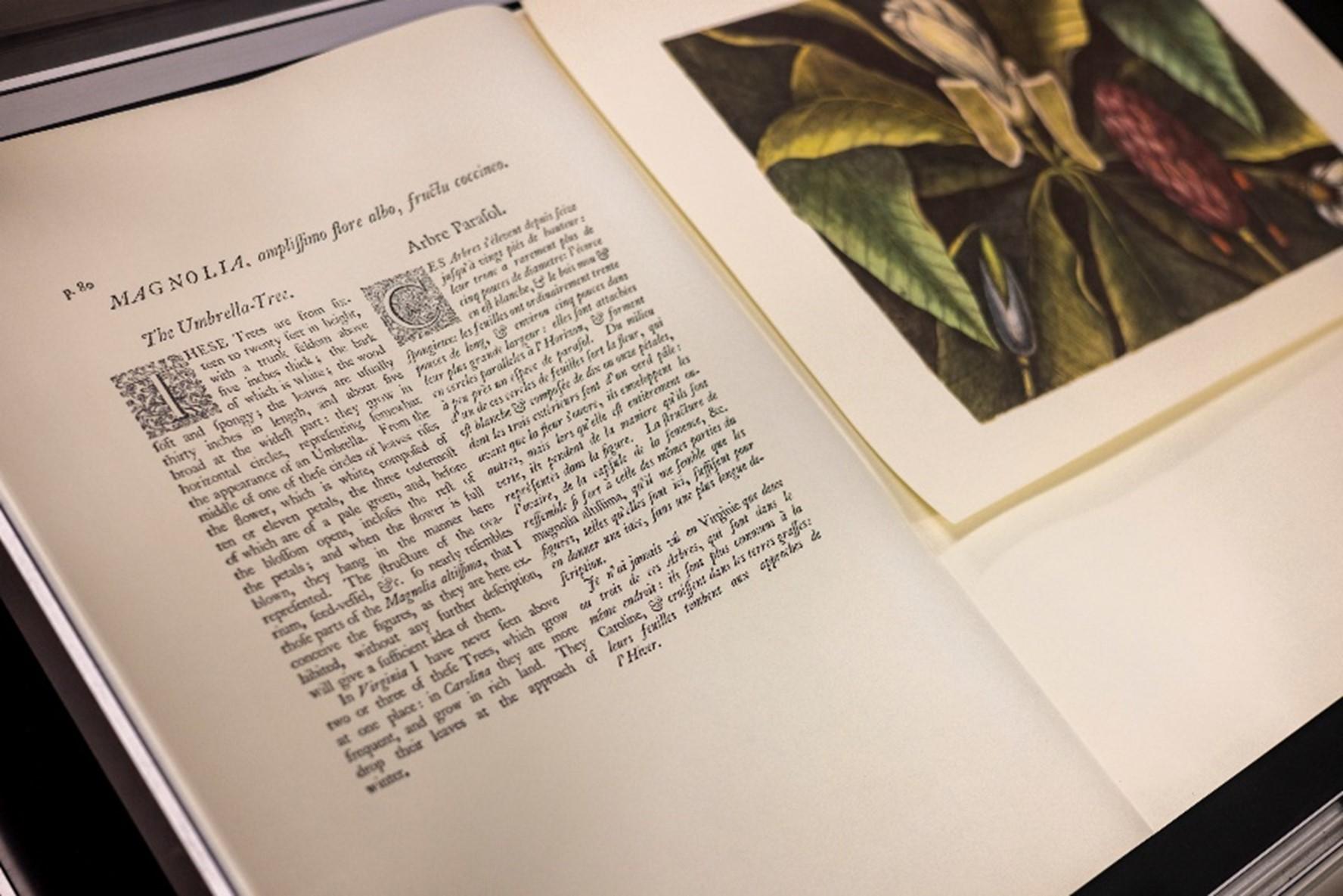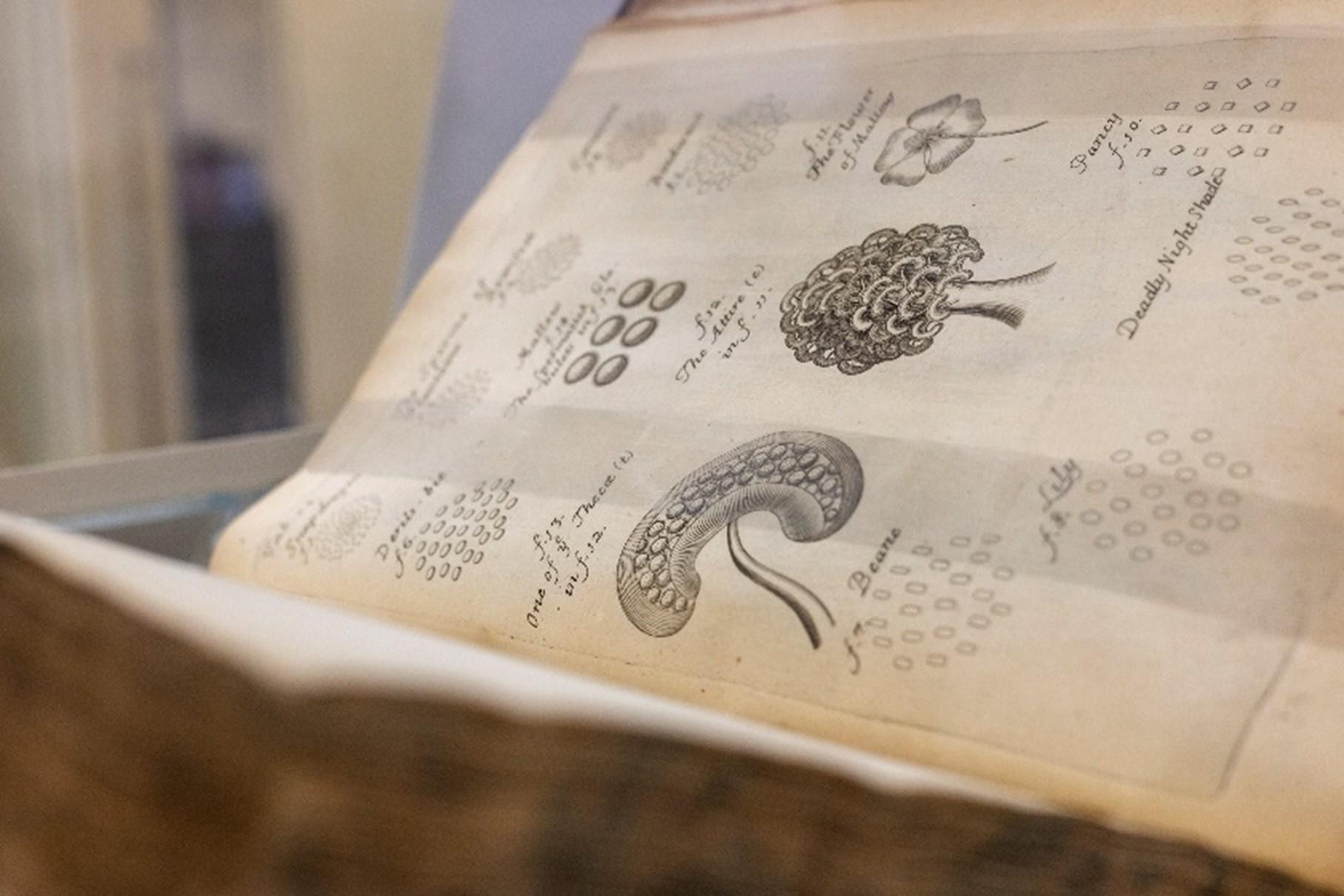
University Libraries gets botanical for spring with its “Plants and Printing” display
Ohio University Libraries’ newest display has come just in time for spring. “Plants and Printing” is an exhibit that highlights botanical illustrations from the 1400s to the 1800s with materials from the Mahn Center for Archives and Special Collections as well as the rare book collection. The exhibit is on the third floor of Alden Library through July 28, 2023, with a complementary digital exhibit available online.
The focus of the exhibit is to demonstrate how technological advances in printing impacted and helped shape the practice of botanical illustration. The drawings served as a method of plant identification that could help treat illnesses and eventually became the basis for plant classification. The evolution of woodcuts as a printing technique is also prominent, which led the way for engravings and etchings that nowadays can help create clearer and more realistic life images of plants for various scientific purposes.

“Plants and Printing” is Morganna Marks’, the Libraries’ Luminaries intern for 2022-2023, first curation experience. Her intent is for viewers to gain appreciation for the historical interest humans have had in the field of botany, as it goes back to the medieval era, and how people have always wanted to understand and record the plant kingdom. Marks also mentioned in an email that she hoped to spark interest in the art form and also show the scientific side of botany.
“While these images are beautiful, the purpose of this art form is the advancement of scientific inquiry through accurate, detailed images that are true to life, so as to aid in plant identification,” Marks wrote. “While the needs for this identification have changed through time, shifting from a focus on correctly identifying medicinal plants to wanting to classify them in a systematic way in the service of the study of botany, the need for accurate representation has remained the same.”

In the past, people made accurate images with just their hands, eyes and the technologies available to them. Marks wishes that an appreciation for the detailed technical skill of the artists from the various time periods is recognized, as capturing images is quick and easy nowadays and sometimes taken for granted.
“The results of their [artists in the past] efforts live on in these works of art in the service of the dissemination of knowledge,” Marks wrote. “Such images are an important part of the history of botany and of printing.”
Photos by Charlie Nick / Ohio University Libraries